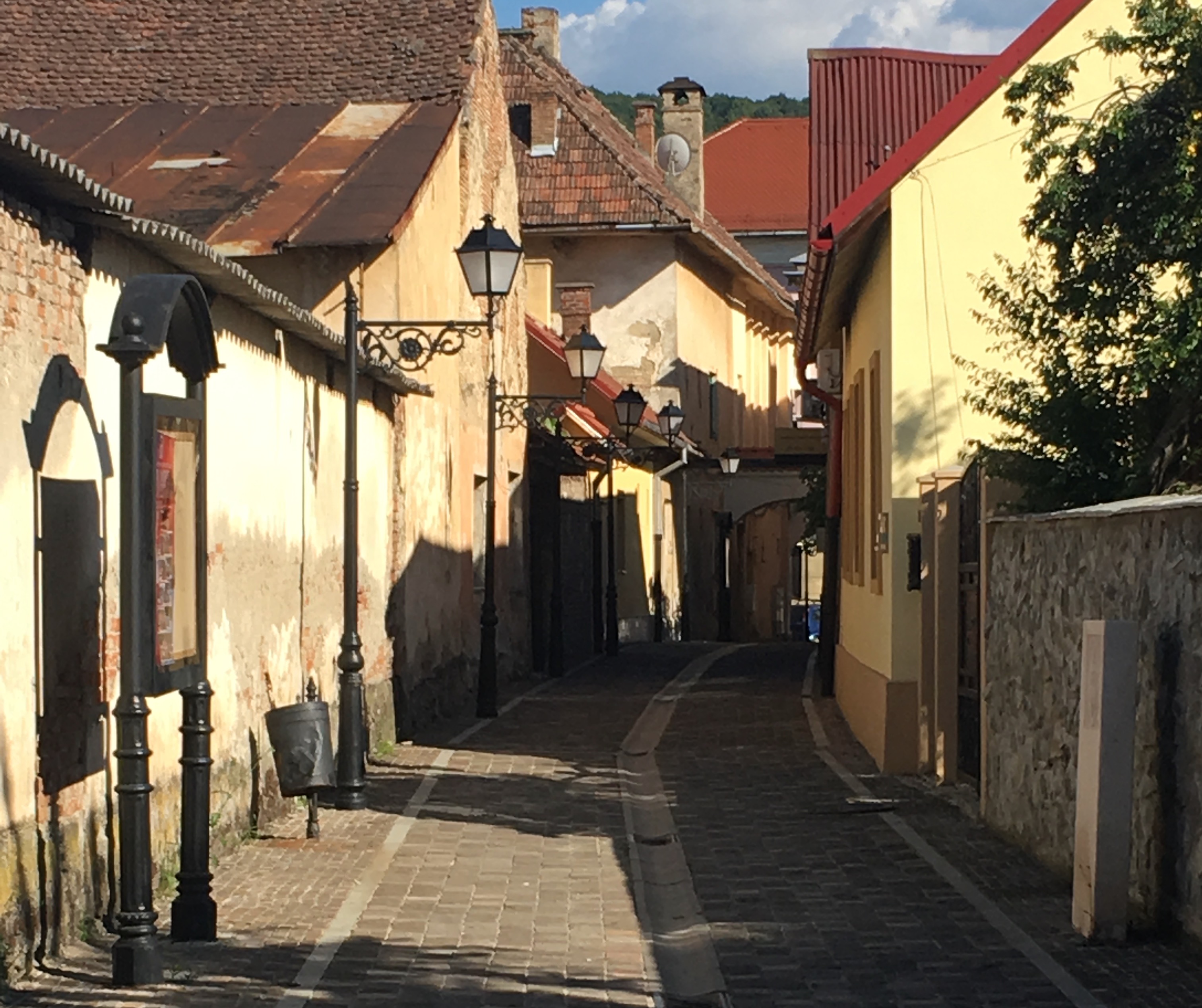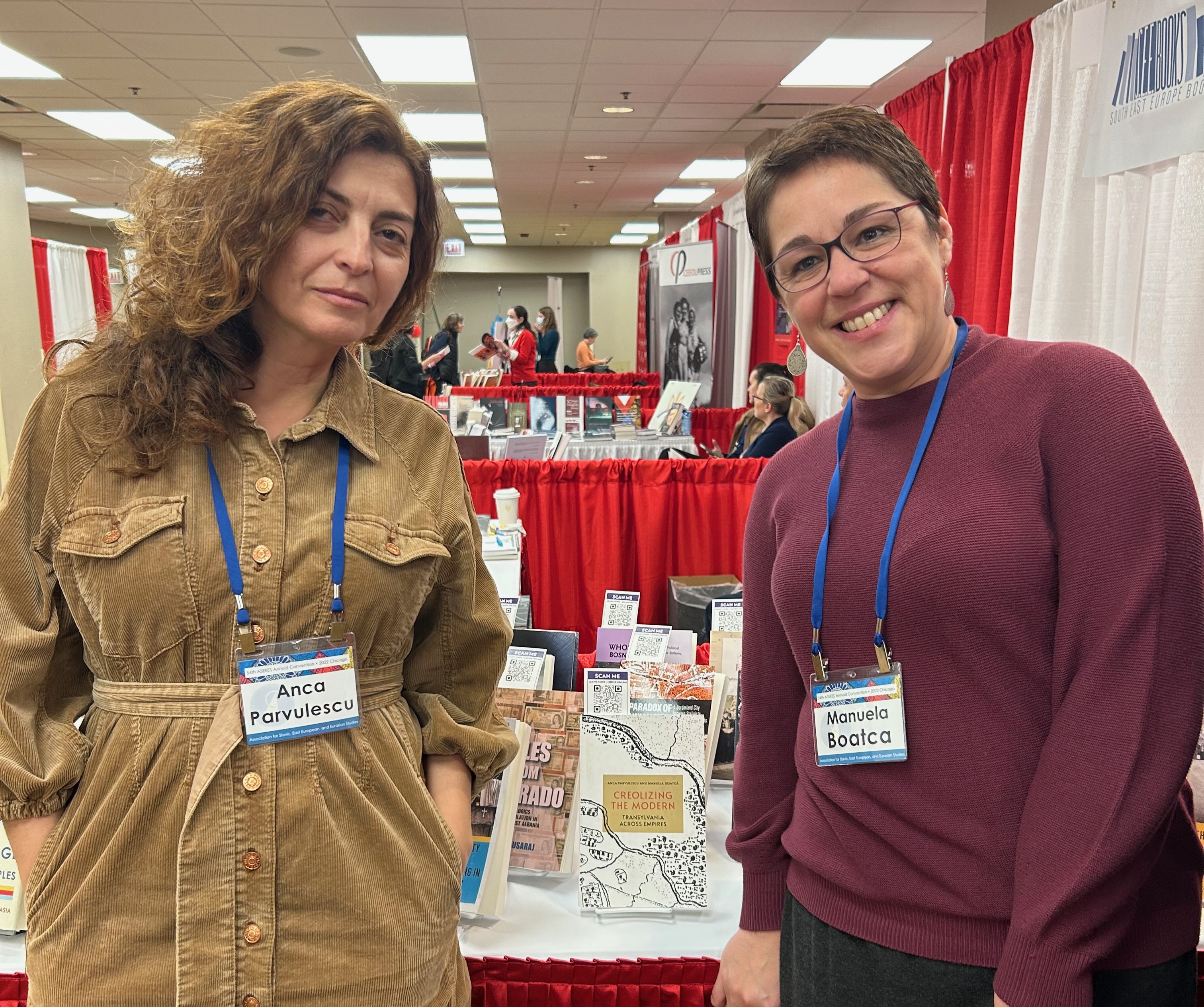Anca Parvulescu discusses her new book, which draws from literary studies and sociology to examine the history of Transylvania in a global context. A celebration of the book’s publication will take place on February 10 at 2:30 pm in Hurst Lounge.
In their new book, Creolizing the Modern: Transylvania Across Empires, Anca Parvulescu and Manuela Boatcă revisit the history of Transylvania as a series of migrations and imperial formations. Parvulescu, the Liselotte Dieckmann Professor of Comparative Literature, and Boatcă, a sociologist at the University of Freiburg, Germany, take an interdisciplinary approach to this history by analyzing the socio-historical patterns reflected in the novel Ion, published by Transylvanian Romanian author Liviu Rebreanu in 1920.
How did this project originate?
Creolizing the Modern came out of my teaching. In my comparative literature classes here at WashU, students often discussed the places they came from in the context of the theoretical frameworks we encountered. For a long time, I resisted doing that myself. But those discussions gave me more license to think about the part of the world I come from — a small region in western Romania called Transylvania. I co-wrote the book after spending time and teaching in the Transylvanian village of Telciu alongside a wonderful community of scholars.

The Habsburg Empire, the Ottoman Empire, and the Russian Empire competed for power at various points in Transylvanian history. As these empires came and went, they left cultural traces that we still see today. There are seven languages spoken in the region. In Creolizing the Modern, my co-author, Manuela Boatcă, and I focus on Transylvania’s multi-lingual intellectual history and develop a comparative method for engaging with similar regions around the world.
What do the terms “inter-imperiality” and “creolization” mean in your book?
The concept of inter-imperiality comes from Laura Doyle, a professor of English at the University of Massachusetts, Amherst. It emerges from and seeks to explain regions of the world like Transylvania that have experienced domination under multiple, conflicting empires over time. The term creolization, meanwhile, comes from Caribbean history, the work of Édouard Glissant and Stuart Hall in particular, and describes the unequal mixing of cultures and languages, which we often see in inter-imperial regions.
Through your interdisciplinary collaboration, how did you attempt to “creolize” sociology and literary studies?

This book was an occasion for me to embrace the fact that I am a literary critic interested in sociological issues and to explore what it might mean to crosspollinate methodologies from these two fields. Although they are often siloed from each other, literary studies and sociology ask very similar theoretical questions about modernity and coloniality.
This book would not exist without my co-author Manuela Boatcă. She is a sociologist, but she often writes about literary studies; I study literature, but I’ve often been told that my work is sociological. She's basically my alter ego!
Is it fair to say that sociology allowed you to approach your research questions at the macro level, while literature filled in the details?
We were interested in putting larger trends of inter-imperiality and creolization in conversation with the everyday lives of Transylvanian villagers. We found that literature offers a good archive for illustrating how individual people navigate their inter-imperial context. Literature gives us characters, affects, and narratives that allow us to see patterns of identity formation. This is why we decided to filter our arguments through the narrative of Liviu Rebreanu’s 1920 novel Ion.
What is the significance of analyzing this particular novel?
Ion is the most well-known novel of Romanian literature, but it's unheard of outside of Romania. Choosing to read it as a text of world literature is a bit of a provocation. We’re basically asking, ‘If whole regions of the world do not have a single exemplary text in the canon of world literature, what does that tell us about that canon?’ Ideally, canons would be fluid, open, and profoundly multi-lingual.
In Ion, how do characters navigate the inter-imperiality of Transylvania?

One thing we examine in the novel is the hierarchical ethnic and racial landscape. A familiar narrative about Transylvania within the Austro-Hungarian Empire is that the Romanian population was oppressed by the other two major ethnic groups: Hungarians and Germans. But there are two racialized populations in this historical context that have largely been ignored — Jewish and Roma people, both of whom were disenfranchised for most of their history in the region.
We revisit these historical narratives alongside Rebreanu’s novel and reveal that the character Ion, a Romanian peasant, does not have access to the local schools, does not speak the language of the justice system, and does not own land. However, in order to feel like he belongs, he often uses rhetorical strategies to position himself above his Jewish and Roma neighbors. For example, in one crucial episode in the novel, he declares that acquiring land is important to him so that he won’t be ‘worse than a gypsy.’ This is a strategy of identity formation, a claim to rights, anchored in the racialization of another minority group.
What are the broader implications of this work?
We do not want this book to be strictly about Transylvania. We hope that we're developing a methodology that can be used and revised in other regions of the world with conflicting imperial histories. Sometimes, it helps to look at another object of analysis to better understand the one that mostly interests you. I think many aspects of Transylvania can be productively compared to a number of inter-imperial cultural geographies of the world—like Taiwan or the Philippines.
How might your analyses be relevant to the current conflict in Ukraine?
Like the history of Transylvania, the history of Ukraine was not well known before the war. The western part of contemporary Ukraine, the historical region of Galicia, had a similar history to Transylvania, especially during its incorporation in the Austro-Hungarian Empire. For a long time, Galicia was thought to be the threshold between western and eastern European empires. Today, as Russia is invading the country and the United States and NATO are becoming involved in defending Ukraine, one could describe the conflict as inter-imperial.
I hope that books like ours can help us process the long history of inter-imperiality in the region. They can also help us understand that nationalism is not a solution to inter-imperial conflict. Creolization acknowledges and embraces relationality—with neighbors and across the world.





